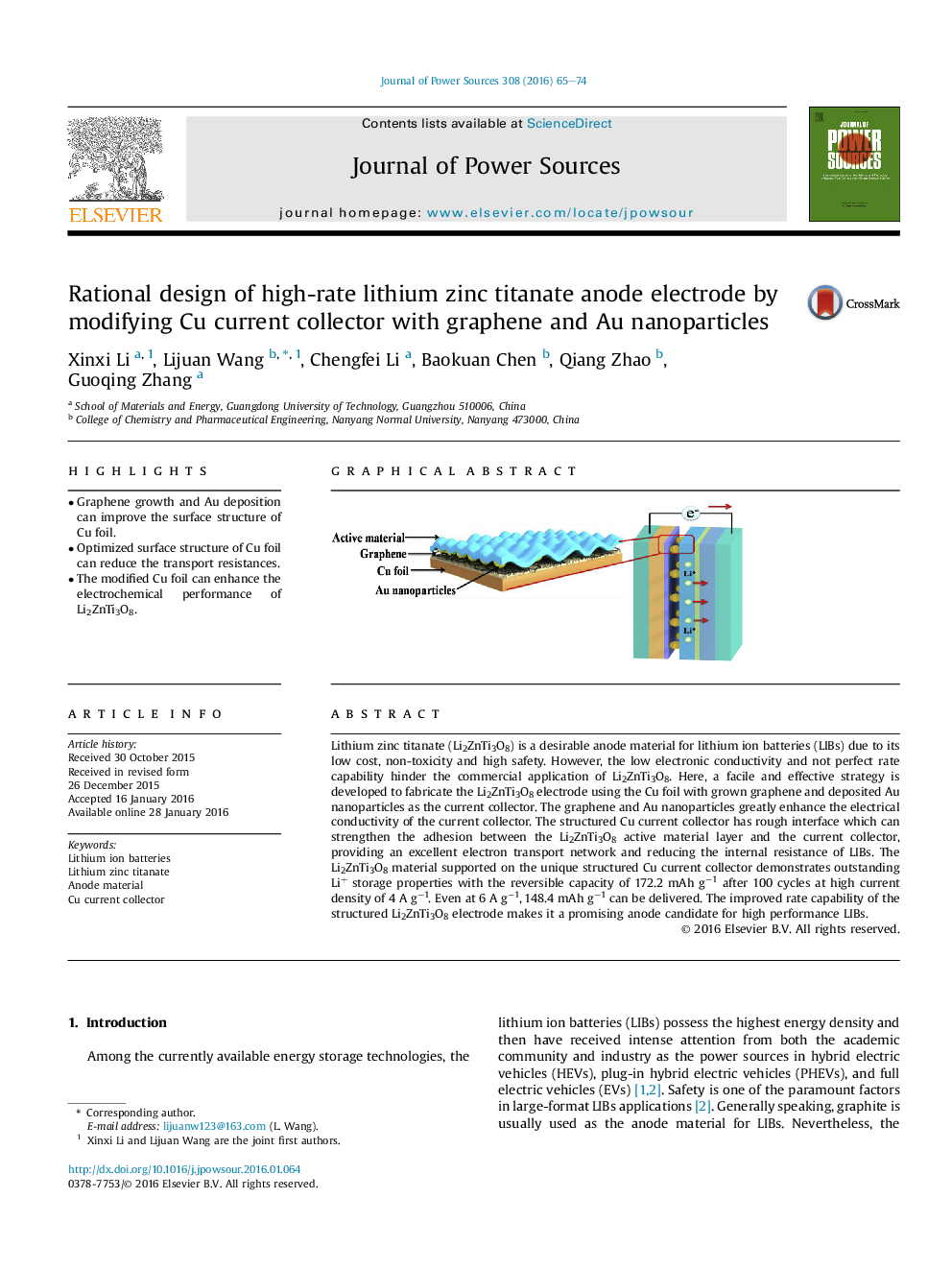| Article ID | Journal | Published Year | Pages | File Type |
|---|---|---|---|---|
| 1285551 | Journal of Power Sources | 2016 | 10 Pages |
•Graphene growth and Au deposition can improve the surface structure of Cu foil.•Optimized surface structure of Cu foil can reduce the transport resistances.•The modified Cu foil can enhance the electrochemical performance of Li2ZnTi3O8.
Lithium zinc titanate (Li2ZnTi3O8) is a desirable anode material for lithium ion batteries (LIBs) due to its low cost, non-toxicity and high safety. However, the low electronic conductivity and not perfect rate capability hinder the commercial application of Li2ZnTi3O8. Here, a facile and effective strategy is developed to fabricate the Li2ZnTi3O8 electrode using the Cu foil with grown graphene and deposited Au nanoparticles as the current collector. The graphene and Au nanoparticles greatly enhance the electrical conductivity of the current collector. The structured Cu current collector has rough interface which can strengthen the adhesion between the Li2ZnTi3O8 active material layer and the current collector, providing an excellent electron transport network and reducing the internal resistance of LIBs. The Li2ZnTi3O8 material supported on the unique structured Cu current collector demonstrates outstanding Li+ storage properties with the reversible capacity of 172.2 mAh g−1 after 100 cycles at high current density of 4 A g−1. Even at 6 A g−1, 148.4 mAh g−1 can be delivered. The improved rate capability of the structured Li2ZnTi3O8 electrode makes it a promising anode candidate for high performance LIBs.
Graphical abstractFigure optionsDownload full-size imageDownload as PowerPoint slide
